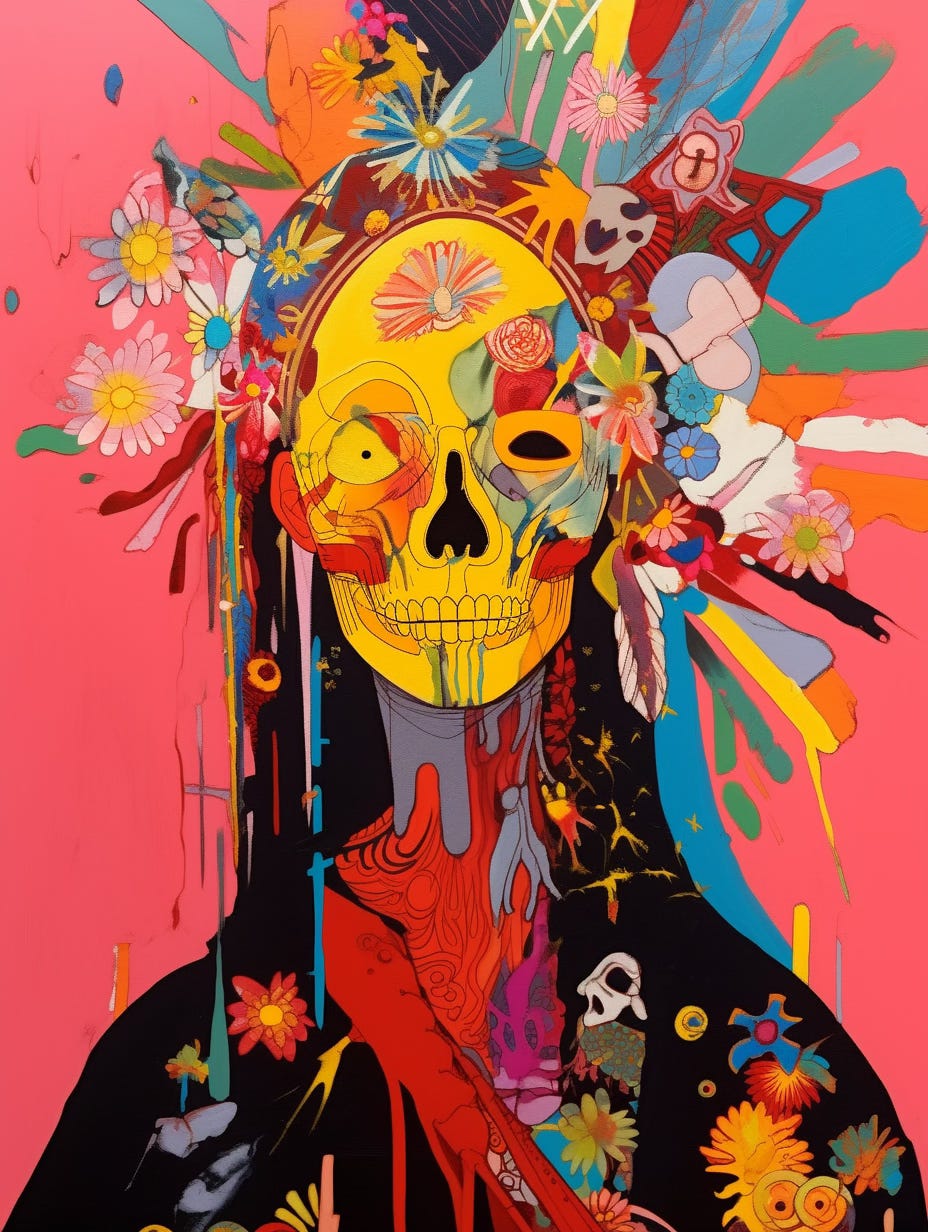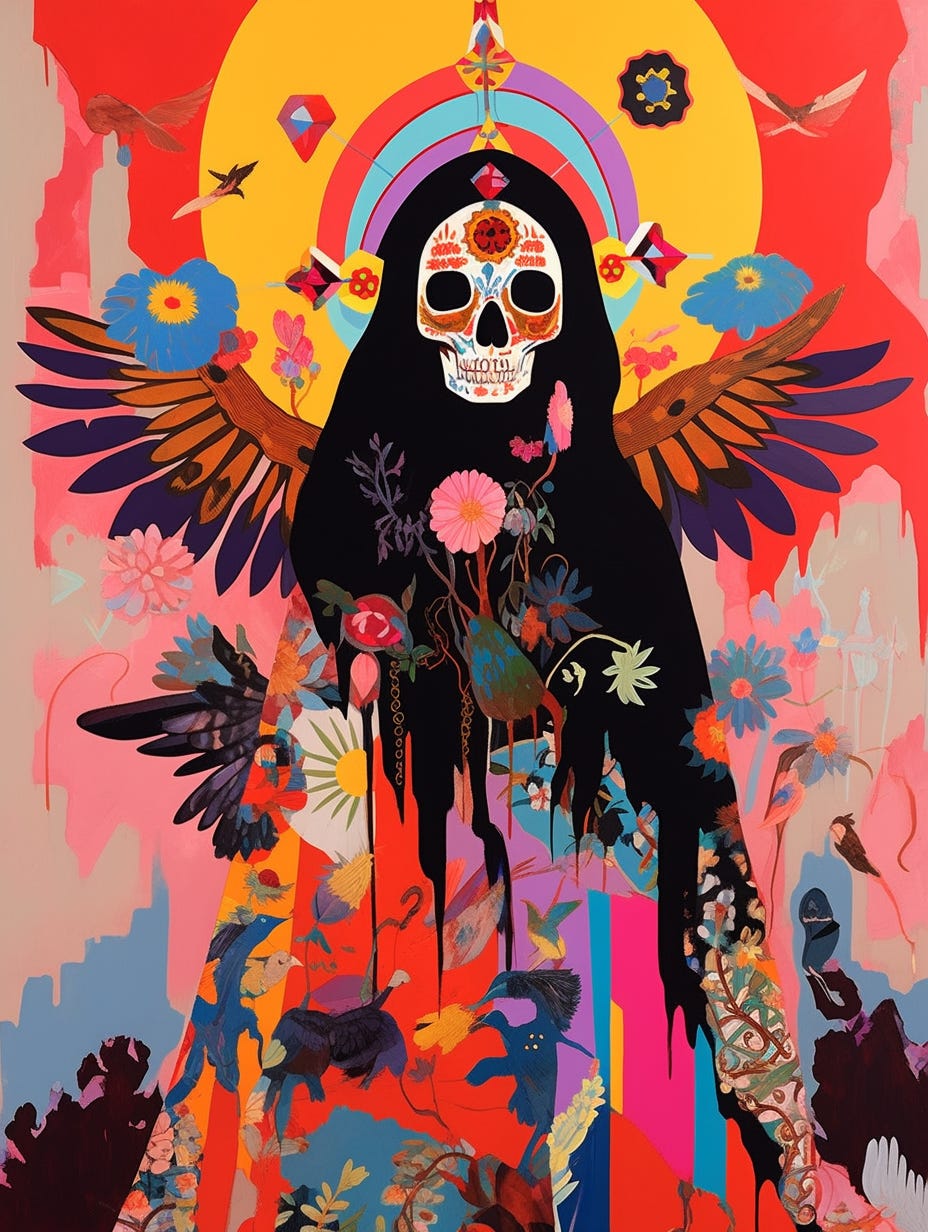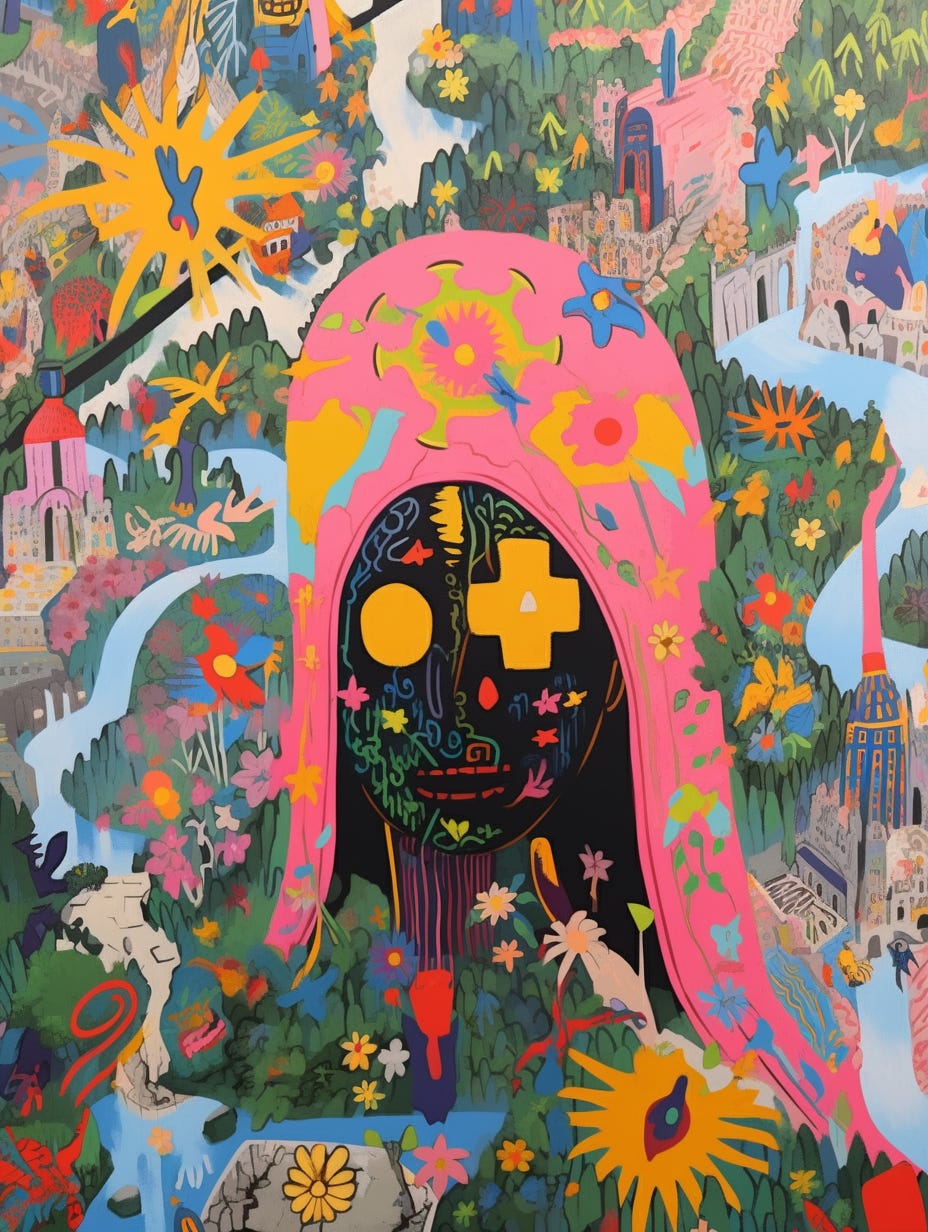Uncover Libra’s Charm & Halloween’s Haunted History
Rediscovering Halloween, Part 1: The Roots of All Hallows' Eve
Exhibits: Music | Moonstruck | TV | Art | Lessons |Join the Community | Shop | About |
Hey gang!
We’re finally here—October has arrived, and you know what that means! The spooky season is officially upon us. 🍂🎃 Whether you're already planning your costume or just enjoying the crisp autumn air, Halloween has a way of enchanting us all. 🍁
Right now, we're in the second decan of Libra (October 3 - 13). This decan is ruled by Saturn, adding a touch of responsibility and structure to Libra's natural charm and diplomacy. It's a great time to focus on bringing balance into your relationships while staying grounded and practical in your decisions. You might feel a pull to finalize plans and set boundaries, but don't forget to embrace the magic and fun of the season, too!
But what if I told you this holiday, with all its fun and frolic, has origins far darker than the candy corn and carved pumpkins we love today? Halloween has ancient, mysterious roots that stretch back millennia. Over the next few weeks, I’ll be breaking down the legends, myths, and eerie history behind the holiday.
Before we dive in, let me give you some tunes to set the mood! I’ve just released my October Playlist, packed with moody beats and haunting melodies that’ll keep you grooving through the rest of the month. 🎧🍁 Check it out here.
Now, let’s step into the shadows...
Part 1: The Forgotten Feast of the Dead
While today we know Halloween as a night of playful mischief, costumes, and candy, its origins are far older—and far eerier—than most realize. In fact, the holiday as we know it can be traced back to the ancient Celtic festival of Samhain, celebrated over 2,000 years ago. Samhain was no innocent autumn festival. It was a time when the boundaries between the world of the living and the dead were believed to grow perilously thin.
But Samhain wasn’t just about warding off spirits with carved turnips or bonfires. It was deeply tied to death, the afterlife, and something much darker: The Feast of the Dead.
An Ancient Fear of the Unseen
The ancient Celts believed that on the night of October 31st, the veil between our world and the Otherworld—where spirits, gods, and the dead reside—would lift. The dead could return to walk the earth, seeking both vengeance and reunion. To keep these roaming spirits from entering homes and causing chaos, the Celts would leave out food and offerings on their doorsteps, a kind of tribute to appease these otherworldly visitors. This practice of leaving offerings for the dead is one of the earliest threads connecting the past to our modern-day trick-or-treating.
There’s one particular legend from ancient Ireland that still sends shivers down the spine. The story of The Dullahan—a headless horseman who rode under the cloak of darkness during Samhain. The Dullahan was said to be a harbinger of death, carrying his severed head in one hand and a whip made from a human spine in the other. It was believed that wherever the Dullahan stopped his ride, a soul would be claimed. People feared hearing his approach, as the dull sound of his horse’s hooves meant that death was near. This terrifying myth is thought to have influenced Washington Irving's famous "Legend of Sleepy Hollow" centuries later, but its roots run deep in Celtic lore.
What’s even creepier is how the Dullahan was believed to interact with the living. The headless rider could open the gates to the afterlife with just a whisper, and those unfortunate enough to lock eyes with his severed head were either struck blind or… dragged into the underworld themselves. This figure was a clear representation of how thin the line between life and death became on Samhain. The Dullahan wasn’t just a myth, it was a reminder of how vulnerable humans are to forces beyond their control during this sacred time.
Fires to Ward Off the Dark
To protect against spirits like the Dullahan and other malevolent beings, the Celts would light massive bonfires on the tops of hills. These fires weren’t just for warmth or light; they were sacred. Families would extinguish their home hearths and relight them from the flames of the communal Samhain fire as a way of cleansing their homes of evil spirits. These were the origins of our modern Halloween bonfires and Jack-o'-lanterns.
Even more unsettling were the sacrifices made to ensure that the dead and dark forces stayed at bay. Early Celtic records speak of offerings—sometimes animal, and sometimes human—being made to appease the gods of the underworld. Though this practice faded with time, its echoes remain in our collective psyche, reminding us of the deeply rooted fear our ancestors had of death and the unknown.
The Shift to All Hallows’ Eve
By the time the Christian church expanded into Celtic territories, it began to blend these pagan practices with its own traditions. The church established All Saints' Day (also known as All Hallows’ Day) on November 1st as a way to honor saints and martyrs. The evening before became known as All Hallows’ Eve, which over time morphed into the Halloween we celebrate today. But those ancient fears—the thinning of the veil, the spirits walking the earth, and the attempts to ward off death—still remain at the heart of the holiday.
That’s just a taste of what lies beneath the surface of Halloween’s spooky charm. In the next part of this series, I’ll dig deeper into the more obscure legends that shaped this holiday, from medieval witches to sinister folklore that still lingers in rural villages across Europe.
In the meantime, get cozy with my October Playlist—it’s perfect for setting the Halloween vibe. 🎶🔮 Listen here.
Stay curious and stay connected 🌌📚.
Jase Harley















